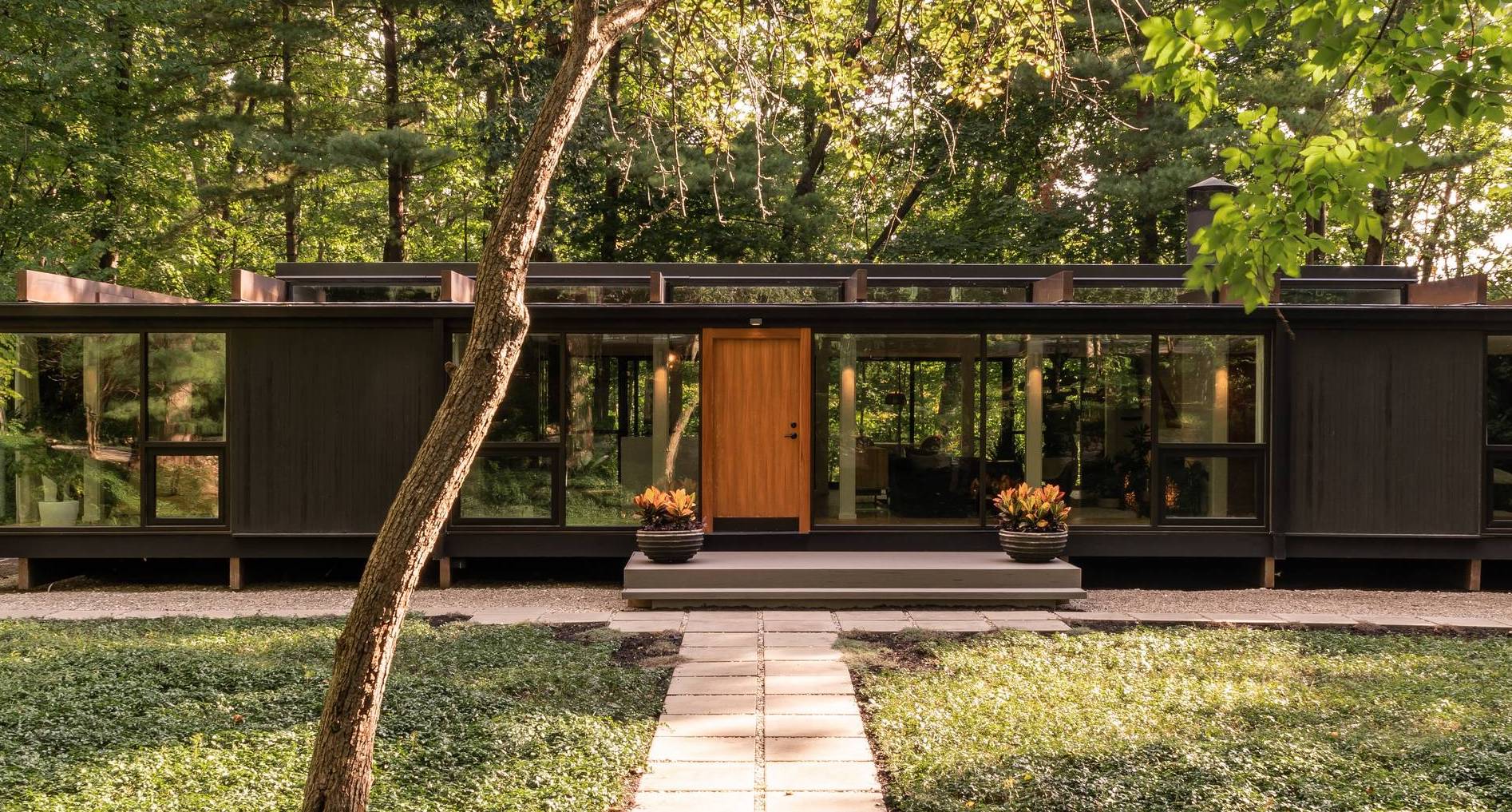
Brian Kelly for The Wall Street Journal
Shane Pliska lives in a glass house. He wakes at dawn and spends hours gazing out of his windows at a forest and a pond. Snapping turtles lay eggs on his yard, and fawns sleep right below his deck. But this isn’t Walden Pond. It’s a suburban cul-de-sac in Bloomfield Hills, Mich.
“It’s changed my life,” says Mr. Pliska, 38, president of a family-owned plant and interior-landscaping company. “It gives me clarity of mind.”
When Mr. Pliska first saw the house in 2012, he was living nearby in a condo building. But he knew he wanted to live somewhere connected to nature. A decision by his condo board to install a bright-blue awning—giving it the look of an IHOP restaurant—motivated his move.
Brian Kelly for The Wall Street Journal
The house, which was built in 1956, wasn’t for sale. So he asked a real-estate agent to keep a close watch. When the home was listed—and marketed as a teardown—Mr. Pliska immediately offered $5,000 over the asking price and bought it in 2012 for $230,000.
The home, a 1,890-square-foot glass-and-wood rectangular box on 1.3 acres, was designed by Edwin William de Cossy, a former instructor at Yale University who had studied under Paul Rudolph, known for his Brutalist style. The cost of construction at the time: $30,000.
To better understand the architect’s vision, Mr. Pliska traveled by train to Connecticut to meet Mr. de Cossy, who was wearing a tie and white racing gloves when he picked him up at the New Canaan train station in a vintage black Mercedes. Over lunch, Mr. de Cossy explained that the style of the house was partly influenced by his work on modern homes in Florida in the 1950s and partly by the time he’d spent hanging out with Philip Johnson at his Glass House in New Canaan. “It’s a dream site,” says Mr. de Cossy, 89, adding that he built it originally for his brother-in-law, Leo Calhoun, who owned a Ford dealership outside Detroit.
Mr. Pliska lived in the house without changing anything for about two years. Then one stormy night, he heard a loud boom and felt shaking as a giant oak tree punctured his flat roof. The redwood roof beams saved the house from complete collapse.
Brian Kelly for The Wall Street Journal
“It was in a pretty sad state,” says Roman Bonislawski, the co-owner of Birmingham, Mich.-based architectural firm Ron & Roman who led the $300,000 renovation, which took two years to complete. The project includes new windows, replacing the cork flooring with slate in the living-room conversation pit, redoing the bathrooms and bumping out the master bedroom to add a small balcony. Mr. Pliska picked a modern Italian Scavalini kitchen (paying a discounted $35,000 because it was a floor model) with reflective avocado-green glass cabinets and put in new decks made of composite materials in front and out back.
What didn’t change was Mr. de Cossy’s fundamental design. The house is raised on a pedestal with redwood beams that cantilever out from below on all four sides and on top to hold up the roof, giving it a floating illusion. All the rooms are visible from the exterior except the bathrooms, one of which is enclosed by the kitchen wall and the other by the fireplace chimney.
After graduating from Emerson College and working briefly in film in Los Angeles, Mr. Pliska moved home in 2004 and six years later took over as president of Planterra, a business founded by his father, Larry.
The younger Mr. Pliska oversaw the building of a new glass-enclosed headquarters with a plant-adorned courtyard that doubles as a wedding-venue business. “He really changed things,” says Larry Pliska, 72, who still works there.
Brian Kelly for The Wall Street Journal
Shane Pliska’s neighborhood has also changed: It was once a laboratory for modern design, inspired by the nearby art academy Cranbrook, which owns the Eliel Saarinen Art Deco-style Saarinen House. Now, existing houses are torn down to make way for large new structures that Mr. Pliska calls “Barbie castles.”
Still, some Midcentury Modern homeowners there have tried to preserve an element of the past, gathering regularly for cocktails to admire each other’s architecture and discuss design. Neighbor Nancy Lockhart says one thing about Mr. Pliska’s house remains unchanged: A feral tabby cat cared for by the former owner, an artist named Fern Tate, still sleeps under the house and roams the neighborhood. They take turns feeding the cat, which they named Fern.
———
An Architect’s ComebackIn the early 1950s, fresh out of the army with no college education, Edwin William de Cossy started designing modern homes in St. Petersburg, Fla. His work caught the eye of Paul Rudolph, who became one of the central figures of postwar American architecture, and the two began collaborating.
Mr. de Cossy earned a degree in architecture from Yale University in 1957, where he later became an instructor. As a principal with Douglas Orr, de Cossy, Winder & Associates, Mr. de Cossy designed a number of significant buildings, including the Knights of Columbus Museum in New Haven.
Mr. de Cossy’s career lagged until 1975, when he resurfaced as a builder of wooden sailboats. He had a comeback five years ago, designing several homes, and is now retired, currently building a 20-foot cruising sailboat with his daughter in North Branford, Conn.
The post Revitalizing a Michigan Midcentury Marvel appeared first on Real Estate News & Insights | realtor.com®.
from DIYS https://ift.tt/2DrnN7x
No comments:
Post a Comment